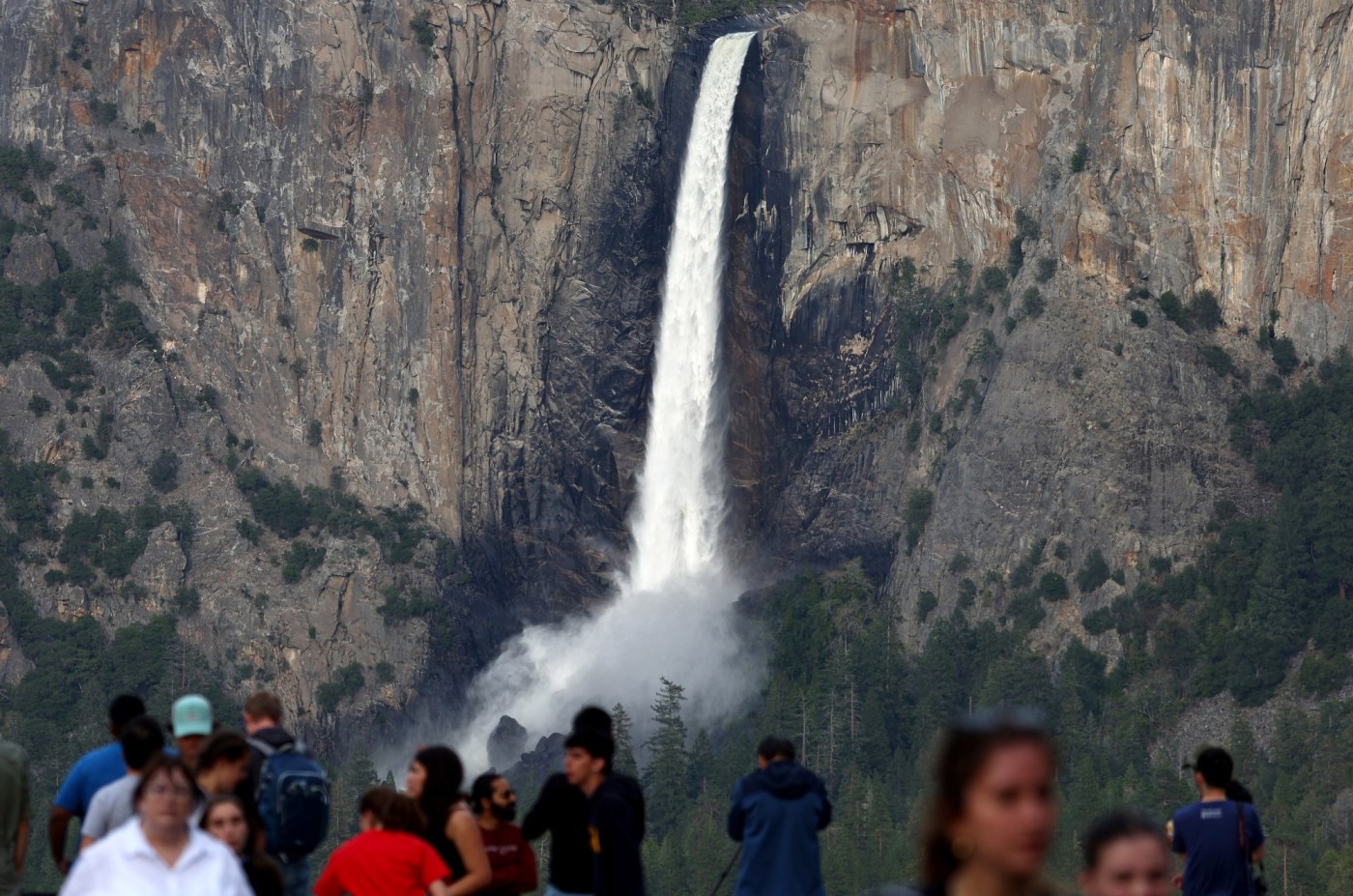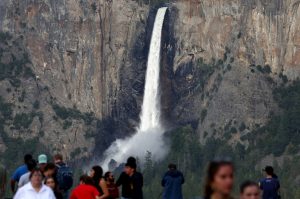
Want to visit Yosemite this summer? You’ll need a reservation
Does the wilderness feel less wild when it must be scheduled?
Summer visitors driving to Yosemite National Park will soon find out, when the park moves to a reservation-only entry system, like movie theaters and theme parks.
Overwhelmed by last year’s crush of visitors, the popular park will also require advance booking of vehicles on spring and autumn weekends, according to a plan announced by the Park on Wednesday. Reservations will open at 8 a.m. on Jan. 5.
The plan is based on the past four years of experience, as well as public feedback and lessons learned from other national parks, said Superintendent Cicely Muldoon.
Reservations were required during the COVID pandemic, then again in 2022, from March 23 to Sept. 30, due to a number of construction projects that restricted access to some popular areas of the park that year.
The limits on visitors enhanced the wilderness experience, rather than detracting from it, she said.
“The people who were able to get reservations absolutely loved it,” experiencing giant sequoia groves, wilderness and waterfalls free of stress and congestion, said Muldoon. “It was a game-changing experience — how one would want to visit a national park.”
When the system was suspended last summer, chaos ensued, Muldoon said. Huge crowds caused such long waits to get into the park that some visitors were forced to turn back. Cars were parked illegally in traffic lanes, on grass and between rocks, with lines stretching on for hours. The havoc was compounded by deep Sierra snow and a shortened season, concentrating visitors into peak summer months.
“It was back to the bad old days,” said Muldoon. “It was really terrible. Parking was off-the-charts crazy.”
Walk-in visitors do not require a reservation, but for travelers who drive, reservations are required for entry on weekends from April 13 to June 30; every day from July 1 to Aug. 15; and on weekends from Aug. 16 to Oct. 27. They must be booked through the website Recreation.gov/timed-entry/10086745.
Visitors will pick from two types of reservations: Reservations valid for a full day, or reservations valid for entry any time after noon. Both reservation types — full day and afternoon — are valid for up to three consecutive days, including the arrival date.
There will still be opportunities for casual drop-ins. Reservations aren’t needed to enter the park after 4 p.m. – or before 5 a.m., if you’re an early bird.
Visitors with in-park lodging or campground reservations, wilderness or Half Dome permits, or who enter the park on buses or on commercial tours do not need a reservation.
Afternoon arrivals and additional full day reservations may be added one week in advance — for example, reservations for a Sept. 30 arrival date will be added on Sept. 23.
Reservations are also required to enter Yosemite on the weekends of Feb. 10-12, Feb. 17-19, and Feb. 24-26, during peak time for the “firefall,” a waterfall streaming down the face of El Capitan and illuminated by a February sunset. The firefall, which has become a massive draw for photographers, occurs in February when the setting sun hits Horsetail Fall at just the right angle. Campsites usually available on a first-come, first-served basis will also require reservations.
Several other national parks are taking a similar approach, such as Marin County’s Muir Woods, Arches National Park in Utah, Rocky Mountain National Park in Colorado, Acadia National Park in Maine and Glacier National Park in Montana.
The online reservation system has raised concerns that it will discourage visitors such as the low-income and historically marginalized communities that the Park Service is working hard to attract.
Related Articles
Puerto Rico’s restaurant scene has never been better. Here’s why
Record travel season approaching with gas and airfare costs down, AAA says
Travel: The best way to see Scandinavia is by sea
Fun things to do with the kids during Vacation Week
Tourists are flooding Mexico’s wine country. They’re also destroying it
Many people don’t have a job or lifestyle that allows them to plan six months in advance for a vacation, say critics.
But Mark Rose, manager of the National Parks Conservation Association Sierra Nevada Program, commended Yosemite’s strategy, saying that all visitors to the park, “especially those from underrepresented communities, deserve a positive experience, not gridlock traffic.”
“We strongly support the return of Yosemite’s reservation system in 2024, particularly following a summer where no limitations at park gates led to frequent hours’ long traffic jams, Valley closures, and untold damage to natural and cultural resources,” he said. “Beyond 2024, we urge the Park Service to move once and for all towards a permanent reservation system.”
Yosemite is working with its nonprofit partners to publicize the reservation system in Spanish and do outreach in the Central Valley, said Muldoon.
“We need to find a system that is equitable,” she said. “We really want to expand that effort.”
The reservation requirement may enhance the experience for visitors, but it could mean less business for the shops and lodges that surround the park, according to the Yosemite Mariposa County Tourism Bureau.
Tony McDaniel of the Tourism Bureau said it plans to promote other activities in the region, such as visiting Gold Rush history.
“When tourism is slowed by the reservation system…people aren’t filling our hotels, and they’re also not supporting other small businesses,” he said. “Our businesses located outside of the park in Mariposa County are trying to basically make up an entire year’s worth of profit with generally just the summer periods. So when the park puts a reservation system in place, those businesses are left trying to adapt.”
“We’ll help people understand there’s more to see in Mariposa County than just in Yosemite,” he said.


